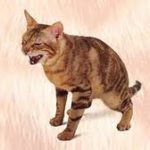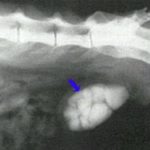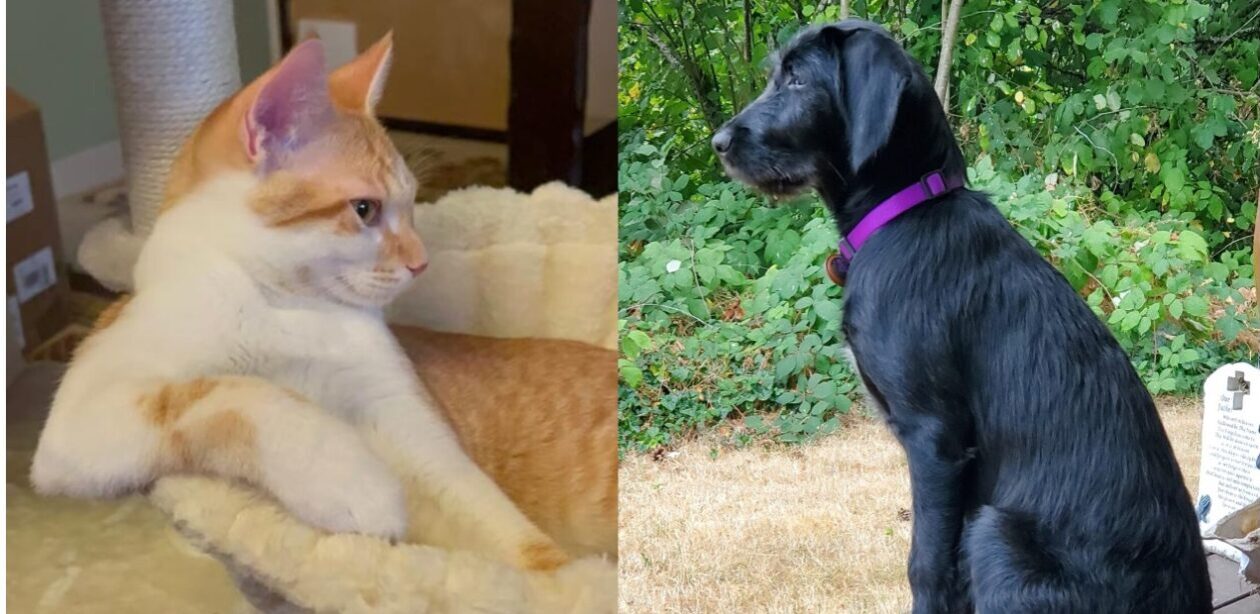Bladder Stones in Cats and dogs

Bladder stones or calculi may not be a topic of interest to most pet owners unless your pet has had illness related to these mineral densities. However, you may be predisposing your pet to problems depending on the diet you currently are feeding.
Cats and dogs can have urinary calculi. Early signs of calculi include frequent urination, straining to urinate, blood in the urine and/or licking the urethra. Cats spend extra long times in the litter box. In severe cases no urine is voided. There are six different types based on the mineral crystal content in the stone. The body forms these different crystals in relation to specific diseases. Let me discuss each briefly.
One of the most common calculi we see is called Struvite. This is a combination of magnesium, ammonia and phosphorous. While dogs or cats of any breed can have these crystal formations we tend to see cats in severe emergency states more often. Perhaps since the monitoring of cats for urination is not a highly visible activity cats may be unobserved until they are howling and can no longer move. Now the pet is in a critical stage and must be examined and be hospitalized for catheterization, fluid therapy and treatment of the crystals. Males have more difficulty trying to pass these stones because of the small opening of the penis. The male becomes “plugged” meaning he can’t urinate . In hours the effects on the bladder wall, kidneys and heart can lead to death. Females can be in trouble if the stones are larger. Stones beyond sand size need surgical removal.
In young cats we see Struvites. While the exact cause is not known it is generally accepted that bladder infections and diet cause development of the calculi. There a several veterinary prescription diets available. A few store brand diets are available and are creating a increase in another type of crystal that we rarely saw years ago. As cats age they can develop oxalate crystals. The easy accessability of the store brand diets when fed to middle aged and older cats creates Calcium oxalate crystals. The bladder is like a chemistry lab and a few reagents (diet ingredients) and minerals added here and there will alter the kidney and bladder function. These are serious calculi causing both lower and upper urinary tract disease.
Urate crystals can form from excess Uric Acid in the bloodstream and in the urine. Many Dalmations and Bulldogs develop these crystals. In humans this causes gout because the joints collect crystals, too. We don’t see this phenomenon. Treatment of concurrent liver disease and specific low protein diets often with medication will control the disease successfully. Xanthine crystals can result if the medication is in excess.
Cystine crystals are found in animals that have an amino acid metabolism defect. Fortunately these are not common. Breeds which may be predisposed are Newfoundlands, dachsunds and Siamese.
Calcium Phosphate crystals (You guessed it this is beginning to sound like a chemistry class.) occur with excess calcium and phosphorus in the bloodstream and urine. Some times breeders feel they will push their pups to be have a larger skeletal frame if they supplement minerals. This is a rotten result.
In most instances the calculi can be controlled with specific diets and sometimes additional medication. In cats stress contributes to the urinary tract disease.Stress may include disease, crowding, changes in environment or new pets in the household. Regular tests on the urine will be helpful to keep current on the disease of the urinary tract. The best advice is to feed your pet a good quality diet. Cheaper brands tend to be high in bone meal which is a large source for minerals. The same minerals can be found in the bladder stones.
